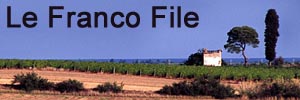In other words, “a disastrous spring?”
We arrived here in the Marais Poitevin, just inland from La Rochelle about half way down France’s west coast, on Monday. On Tuesday we went on a very pleasant, mostly sunny 15mls/24kms promenade à velo [bicycle ride] through the marsh with resident friends Mike and Linda in search of an orchid field they’d found about a month ago. Eventually we found it but the field was now occupied by a small herd of rather attractive reclining cows; it was decidedly orchid-free. Flitting about a few sunny patches beside some of the smaller water channels en route, I noticed a few damselflies but none in high numbers.
After the ride, as we were returning to Guillaume, I spotted Gerard, a local we’d been introduced to on previous visits. Gerard punts barque-loads of tourists on trips through the marsh, explaining aspects of the local area as he goes. We had a natter using my stilted French and I suggested, “mauvais printemps” [bad spring] to him. “Catastrophe!”, he replied emphatically, translation being superfluous. I suspect he was referring to the lack of tourists spending money on barque trips but I was beginning to think it was applicable to the wildlife populations, too.
For the last two days, Francine and I have pedalled round a bit more of the marsh looking at some of our previously observed Odonata locations and what we’ve seen – or rather, not seen – left me somewhat shocked. Several of the areas where we had spent some time observing Odos during previous years were apparently deserted. Other hot-spots had a few Odos but nowhere near the numbers that I have come to expect.
France, particularly the northern half of France, has been subjected to the very same terrible spring weather that has been afflicting the UK. When some good weather turns up, it doesn’t stick around for very long and there has been a lot of overcast skies, considerable rain and a lot of colder than expected days. Temperatures have been up and down like a yoyo; on Wednesday here it hit a sweltering 36°C/97°F but Thursday topped out at just 21°C/70°F. None of this instability and cool is very good for insects in general and low insect populations have a knock-on effect on all insectivores. I’m staggered, though, by the apparent reduction in dragonflies. When we come here it is usually on the way south (late May/early June) and now we are a few weeks later, dropping in on the way back north. Late June/early July, though, should be pretty much the height of the Odonata season.
In the south, Fanjeaux was very low on dragonflies, though I’ve largely blamed the fish-farming for that reduction. Now, however, we are seeing it here in the north, too. Maybe Fanjeaux is suffering from two separate effects.
Having been so impressed by the life relatively teeming at les tourbières de Vendoire last weekend, with everywhere else apparently suffering, I’m wondering how spectacular les tourbières might be in a good year.




























Recent Comments